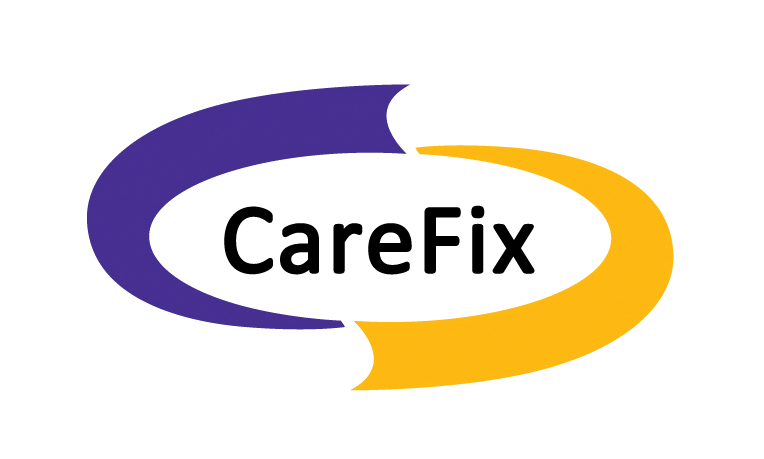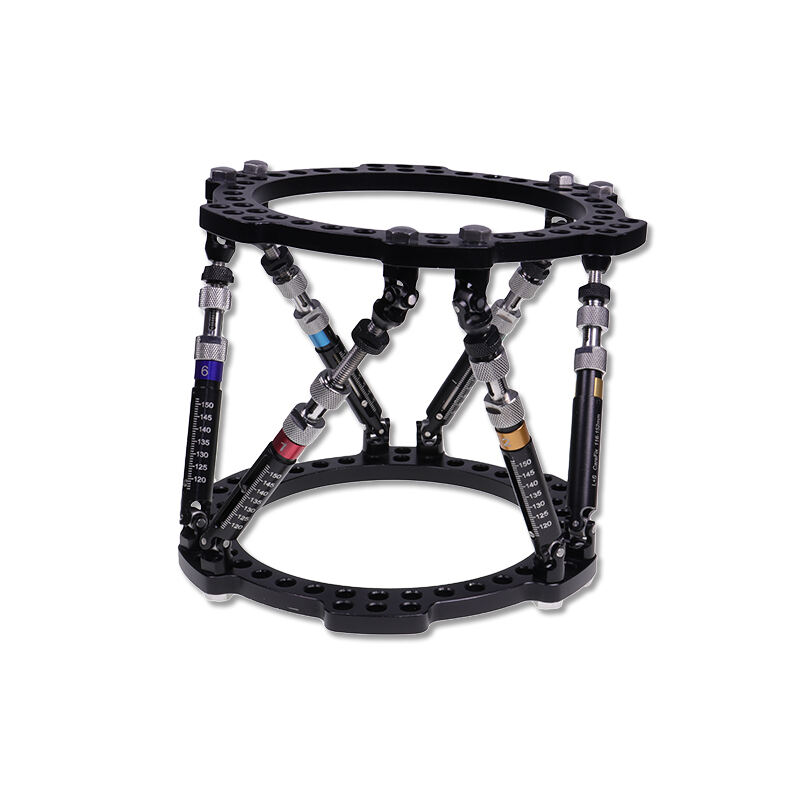Εισαγωγή στην Τεχνολογία Δομικής Κλειδωτής Δομής Taylor
Εξέλιξη των λύσεων 3D Ορθοπαιδικής στη Διόρθωση Αναπλάστων
Η ορθοπεδική ιατρική έχει εξελιχθεί δραματικά από τότε που η χειρουργική επέμβαση σήμαινε μεγάλες περικοπές και περιορισμένο έλεγχο στα αποτελέσματα. Παλαιότερα, η πλειοψηφία των ορθοπεδικών εργασιών απαιτούσε εκτεταμένες χειρουργικές επεμβάσεις για να διορθωθεί με το χέρι οτιδήποτε ήταν εσφαλμένο. Αυτή η προσέγγιση οδηγούσε συχνά σε μακροχρόνιες αποκατασταλτικές θεραπείες με απρόβλεπτα αποτελέσματα. Η κατάσταση άλλαξε σημαντικά με την εμφάνιση της τεχνολογίας τρισδιάστατης μοντελοποίησης και εκτύπωσης. Οι γιατροί άρχισαν να χρησιμοποιούν εικονοληπτικές εξετάσεις για να δημιουργήσουν λεπτομερή εικονικά μοντέλα των οστών και των αρθρώσεων, κάτι που έκανε τον σχεδιασμό της θεραπείας πολύ πιο ακριβή και προσαρμοσμένο σε κάθε άτομο. Μια σημαντική εξέλιξη ήρθε με αυτό που σήμερα είναι γνωστό ως Τεχνολογία Συστήματος Taylor Space. Αυτή η καινοτομία έχει ενισχύσει σημαντικά τόσο τα ιατρικά αποτελέσματα όσο και την ικανοποίηση των ασθενών μετά τις επεμβάσεις τους. Προβλέποντας το μέλλον, καθώς η τρισδιάστατη εκτύπωση βελτιώνεται ακόμη περισσότερο, οι χειρουργοί θα μπορούν να προσαρμόζουν τις επεμβάσεις τους με πολύ μεγαλύτερη ακρίβεια στη μορφή και τις ανάγκες της συγκεκριμένης σωματικής δομής του κάθε ασθενή.
Βασικά Κύρια Αρχές των Συστημάτων Taylor Spatial Frame
Το Taylor Spatial Frame αποτελεί μια επαναστατική μέθοδο για τη διόρθωση οστικών παραμορφώσεων στην ορθοπεδική χειρουργική. Στην ουσία, αποτελείται από μεταλλικούς δακτυλίους που συνδέονται με ρυθμιζόμενα στηρίγματα και βραχίονες, οι οποίοι μετακινούν σταδιακά τα οστά στις σωστές θέσεις τους με την πάροδο του χρόνου. Αυτό που κάνει το σύστημα ιδιαίτερα ενδιαφέρον είναι τα βασικά βιομηχανικά εργαλεία που επιτρέπουν στους γιατρούς να κάνουν μικρές, ακριβείς ρυθμίσεις, ενώ προκαλούν ελάχιστη δυσφορία στους ασθενείς κατά τη διάρκεια της αποκατάστασης. Η εξέταση πραγματικών ιατρικών αρχείων από νοσοκομεία σε όλη τη χώρα δείχνει πόσο αποτελεσματικά λειτουργούν αυτά τα πλαίσια όσον αφορά την επαναφορά των οστών στη σωστή θέση. Χειρουργοί που έχουν χρησιμοποιήσει το Taylor Spatial Frame αναφέρουν καλύτερα αποτελέσματα σε σχέση με παραδοσιακές μεθόδους, κάτι που εξηγεί γιατί πλέον πολλές κλινικές διατηρούν αρκετές μονάδες για περιπτώσεις όπου οι συμβατικές προσεγγίσεις απλά δεν είναι αρκετές.
Για περισσότερες πληροφορίες για την τεχνολογία Taylor Space Bracket, μπορείτε να εξερευνήσετε περισσότερες λεπτομέρειες μέσω Taylor Space Bracket Technology.
Κύρια τεχνικά πλεονεκτήματα των 3D Ορθοπαιδικών Συστημάτων
Έλεγχος Ακρίβειας Μέσω Υπολογιστικής Βοήθειας στο Πλάνο
Η ορθοπαιδική χειρουργική έχει γίνει πολύ πιο ακριβής χάρη στον υπολογιστικό σχεδιασμό, γεγονός που άλλαξε τα δεδομένα στη διόρθωση παραμορφώσεων. Οι χειρουργοί πλέον χρησιμοποιούν προηγμένες τεχνικές απεικόνισης σε συνδυασμό με έξυπνους αλγορίθμους για να δημιουργήσουν σχέδια θεραπείας που ανταποκρίνονται πραγματικά στις ανάγκες του κάθε ασθενή, με βάση την ιδιαίτερη σωματική του δομή. Ολόκληρη η διαδικασία στηρίζεται και σε σοβαρή ανάλυση δεδομένων, εξασφαλίζοντας έτσι ότι οι ασθενείς θα λάβουν προσωποποιημένη φροντίδα που θα τους βοηθήσει πραγματικά, αντί για προσεγγίσεις τύπου «μια δοσολογία για όλους». Έρευνες από περιοδικά όπως το Journal of Medicinal Food επιβεβαιώνουν πραγματικά αποτελέσματα. Μιλάμε για καλύτερη ακρίβεια κατά τη διάρκεια των επεμβάσεων και μειωμένες επιπλοκές συνολικά. Αυτού του είδους η ακρίβεια κάνει μεγάλη διαφορά στην αποτελεσματική αντιμετώπιση παραμορφώσεων, χωρίς περιττούς κινδύνους.
Δυνατότητα Σταδιακής Διόρθωσης Αναρμονιών Επί Έξι Αξόνων
Τα συστήματα ρύθμισης έξι αξόνων προσφέρουν κάτι πραγματικά ξεχωριστό όσον αφορά τη διόρθωση πολύπλοκων παραμορφώσεων που απλά δεν ανταποκρίνονται σε συμβατικές θεραπείες. Αυτό που ξεχωρίζει αυτά τα συστήματα είναι το πόσο πιο εύκαμπτα είναι σε σχέση με παλαιότερες τεχνικές. Οι γιατροί μπορούν να κάνουν ακριβείς ρυθμίσεις σε πολλές κατευθύνσεις ταυτόχρονα, κάτι που προηγουμένως δεν ήταν δυνατόν. Η μελέτη πραγματικών περιστατικών από ιατρικά περιοδικά δείχνει επίσης αρκετά εντυπωσιακά αποτελέσματα. Οι ασθενείς που υποβλήθηκαν σε θεραπεία με αυτήν την τεχνολογία είδαν συχνά τις παραμορφώσεις τους να μειώνονται και ανέφεραν βελτιωμένη ποιότητα ζωής μετά την ανάρρωση. Όταν οι ερευνητές συγκρίνουν αυτά τα νέα συστήματα με τις παραδοσιακές μεθόδους, συνεχώς βρίσκουν το ίδιο αποτέλεσμα: η προσέγγιση των έξι αξόνων προσαρμόζεται καλύτερα σε διαφορετικές καταστάσεις διατηρώντας εξαιρετική ακρίβεια. Γι' αυτόν τον λόγο, πολλοί ορθοπεδικοί ειδικοί την θεωρούν πλέον τον χρυσό κανόνα για την αντιμετώπιση εκείνων των δύσκολων προβλημάτων στοιχείων των οστών.
Οφέλη Ελαφρών Επιχειρήσεων
Η ορθοπεδική χειρουργική έχει σημειώσει σημαντικές βελτιώσεις με ελάχιστα επεμβατικές μεθόδους, οι οποίες παρέχουν πραγματικά πλεονεκτήματα για τους ασθενείς. Οι περίοδοι αποκατάστασης είναι πολύ πιο σύντομες σε σχέση με τις παραδοσιακές προσεγγίσεις, ενώ παρατηρείται επίσης σημαντική μείωση των επιπλοκών μετά τις επεμβάσεις. Για παράδειγμα, το Taylor Spatial Frame καθιστά δυνατές αυτές τις λιγότερο επεμβατικές διαδικασίες, ενώ βελτιώνει τη διαδικασία που διανύουν οι ασθενείς κατά τη διάρκεια της επούλωσής τους. Στην πράξη, έχουμε δει πραγματικά καλά αποτελέσματα. Πολλοί άνθρωποι που έχουν υποβληθεί σε αυτές τις χειρουργικές επεμβάσεις αναφέρουν πόσο πιο γρήγορα αισθάνθηκαν καλύτερα και επέστρεψαν στις καθημερινές τους δραστηριότητες χωρίς μεγάλες δυσκολίες. Καθώς η νέα τεχνολογία συνεχίζει να εισχωρεί στα χειρουργεία σε όλη τη χώρα, οι γιατροί διαπιστώνουν ότι μπορούν να επιτυγχάνουν εκπληκτικά αποτελέσματα με μικρότερες τομές και λιγότερη τραυματική επέμβαση στους γύρω ιστούς. Αυτό ταιριάζει απόλυτα με την κατεύθυνση προς την οποία κινείται σήμερα η ιατρική: όλοι επιθυμούν θεραπείες που να είναι αποτελεσματικές, χωρίς όμως να αφήνουν τους ασθενείς να κυκλοφορούν με δυσκολία για εβδομάδες μετά την αποκατάσταση.
Κλινικές εφαρμογές σε περίπλοκες μαλάκματες
Διαχείριση σοβαρών διαφορών μήκους ακροδεξαμενών
Όταν κάποιος έχει σοβαρές διαφορές στο μήκος των ποδιών του, δημιουργούνται πολλά προβλήματα που χρειάζονται ειδική αντιμετώπιση για να διαχειριστούν σωστά. Στο παρελθόν, οι γιατροί χρησιμοποιούσαν κυρίως συμβατικές χειρουργικές μεθόδους, οι οποίες ήταν αρκετά επεμβατικές και συνοδεύονταν από κινδύνους, όπως λοιμώξεις ή μακρά περίοδο θεραπείας. Τα πράγματα άλλαξαν όταν η τρισδιάστατη ορθοπεδική τεχνολογία μπήκε στην εικόνα, ιδιαίτερα συσκευές όπως το Taylor Spatial Frame. Αυτά τα νέα συστήματα επιτρέπουν στους χειρουργούς να μπορούν να μακραίνουν ή να συντομεύουν τα κόκκαλα με ακρίβεια για να επιτύχουν καλύτερα αποτελέσματα. Η τεχνολογία λειτουργεί χρησιμοποιώντας πολύπλοκα υπολογιστικά μοντέλα για να δημιουργήσει προσαρμοσμένα προγράμματα θεραπείας, τα οποία είναι εξατομικευμένα για κάθε ασθενή. Πραγματικά παραδείγματα δείχνουν πόσο καλά λειτουργεί αυτό. Μια μελέτη εξέτασε άτομα που ευθυγραμμίστηκαν οι μηροί τους με τη χρήση του Taylor Frame και βρέθηκε ότι περπατούσαν καλύτερα και ένιωθαν πολύ πιο ικανοποιημένα με τη θεραπεία τους. Προχωρώντας, οι κλινικές που υιοθετούν αυτού του είδους την προηγμένη τεχνολογία μπορούν να παρέχουν πολύ καλύτερη περίθαλψη σε ανθρώπους που αντιμετωπίζουν αυτά τα δύσκολα προβλήματα με το μήκος των άκρων.
Συνδρομικές και Μετά Τραυματικές Γωνιακές Διαφορμούσες
Κατά την αντιμετώπιση γωνιακών παραμορφώσεων που είτε υπάρχουν εξ αιτίας συγγενών αιτιών είτε προκαλούνται από ατυχήματα, οι γιατροί συνήθως χρειάζεται να επιδείξουν αρκετή δημιουργικότητα όσον αφορά τις θεραπευτικές προσεγγίσεις τους. Αυτά τα ζητήματα εμφανίζονται με διάφορες μορφές μη ευθυγράμμισης σε διαφορετικές γωνίες, καθιστώντας τις συνηθισμένες τεχνικές διόρθωσης ανεπαρκείς, καθώς δεν λαμβάνουν υπόψη κατάλληλα τις συγκεκριμένες διαστάσεις. Το Taylor Spatial Frame αλλάζει το παιχνίδι σε αυτό το σημείο, καθώς λειτουργεί εξαιρετικά καλά χάρη στην προσεκτική βαθμονόμηση και στα προηγμένα υπολογιστικά μοντέλα που επιτρέπουν στους χειρουργούς να διορθώνουν προβλήματα ταυτόχρονα σε πολλαπλές διευθύνσεις. Για παράδειγμα, ασθενείς που υποφέρουν από cubitus varus - κατάσταση που εμφανίζεται όταν τα κόκκαλα επουλώνονται λανθασμένα μετά από κατάγματα - έχουν δει πραγματικές βελτιώσεις. Μελέτες που εξετάζουν την απόδοση αυτών των πλαισίων στην πράξη μας δείχνουν ότι τόσο η λειτουργικότητα βελτιώνεται όσο και οι άνθρωποι αναφέρουν ότι είναι πιο ικανοποιημένοι από τα αποτελέσματα. Η εξέταση όλων αυτών των στοιχείων καθιστά σαφές γιατί πολλοί ορθοπεδικοί ειδικοί θεωρούν αυτό το σύστημα ένα από τα καλύτερα εργαλεία που είναι διαθέσιμα για την αντιμετώπιση πολύπλοκων οστικών παραμορφώσεων.
Λοιμώδεις μη ενωμένες κλάσεις που απαιτούν σταθεροποίηση
Όταν αντιμετωπίζουμε έναν μολυσμένο ψευδάρθρωση, αντιμετωπίζουμε ένα από τα πιο δύσκολα προβλήματα στην ορθοπεδική. Αυτά συμβαίνουν όταν τα κατάγματα δεν μπορούν να ενωθούν σωστά, προκαλώντας συνεχή πόνο και καθιστώντας τις θεραπείες πολύ πιο δύσκολες στη διαχείριση. Οι συμβατικές μέθοδοι σταθεροποίησης τέτοιων καταγμάτων έχουν πάντα είναι πολύπλοκες διαδικασίες, με πολλές περιπτώσεις όπου απλώς δεν λειτουργούν και η ανάρρωση παίρνει αιώνες. Γι' αυτό τον λόγο, προηγμένα 3D συστήματα όπως το Taylor Spatial Frame έχουν γίνει καθοριστικής σημασίας εξελίξεις τα τελευταία χρόνια. Παρέχουν στους χειρουργούς πολύ καλύτερο έλεγχο ως προς τον τρόπο που τοποθετούνται τα οστά κατά τη διάρκεια της επούλωσης, διατηρώντας τις βέλτιστες μηχανικές συνθήκες σε όλη τη διαδικασία. Μελέτες δείχνουν ότι οι ασθενείς που υποβάλλονται σε αυτά τα συστήματα αναρρώνουν πιο γρήγορα και αντιμετωπίζουν λιγότερες μολύνσεις στο μέλλον. Η μετάβαση μακριά από τις παραδοσιακές προσεγγίσεις σημαίνει πως οι γιατροί μπορούν πλέον να παρέχουν πιο συνεπείς αποτελέσματα σε ανθρώπους που αγωνίζονται με αυτά τα δύσκολα προβλήματα οστών.
Μέλλοντα Κατευθύνσεις στην Τεχνολογία Επανόρθωσης Αναπλάσματος
Προβλέψεις Βελτιώσεων Με Βάση ΤΙ
Ο τομέας της ορθοπεδικής χειρουργικής βιώνει σημαντικές αλλαγές χάρη στην τεχνητή νοημοσύνη, ιδιαίτερα όσον αφορά την πρόβλεψη των αποτελεσμάτων μετά τις επεμβάσεις και τη διαμόρφωση βελτιωμένων τρόπων προγραμματισμού τους εκ των προτέρων. Με τα συστήματα τεχνητής νοημοσύνης να μπορούν να επεξεργάζονται τεράστιες ποσότητες ιατρικών πληροφοριών, οι γιατροί διαθέτουν πλέον εργαλεία που τους βοηθούν να προβλέπουν αποτελέσματα και να σχεδιάζουν προσαρμοσμένες προσεγγίσεις για τους ασθενείς πριν ακόμη αυτοί μπουν στο χειρουργείο. Αυτά τα προγράμματα μηχανικής μάθησης επιτρέπουν στους χειρουργούς να προσαρμόζουν τις στρατηγικές τους ανάλογα με την ξεχωριστή κατάσταση του καθενός ατόμου, λαμβάνοντας υπόψη παράγοντες που οι συμβατικές τεχνικές συχνά αγνοούν πλήρως. Πρόσφατες μελέτες δείχνουν ακόμη μεγαλύτερες βελτιώσεις στο μέλλον, καθώς τα νοσοκομεία αρχίζουν να ενσωματώνουν την τεχνητή νοημοσύνη στις καθημερινές διαδικασίες. Τι σημαίνει αυτό στην πράξη; Οι χειρουργοί αναφέρουν ότι έχουν πιο ξεκάθαρη εικόνα για το τι λειτουργεί καλύτερα σε διαφορετικές περιπτώσεις, κάτι που τελικά σημαίνει καλύτερους ρυθμούς ανάρρωσης για τους ανθρώπους που υποβάλλονται σε επεμβάσεις αντικατάστασης αρθρώσεων ή σπονδυλικής στήλης σε όλη τη χώρα.
Υβριδικά Συστήματα Βοηθούμενης Ρομποτικής Συνδιαστικής
Οι ρομπότ αλλάζουν το παιχνίδι στην ορθοπεδική χειρουργική, ιδιαίτερα όταν η ακρίβεια στις κινήσεις έχει τη μεγαλύτερη σημασία. Υβριδικά συστήματα που συνδυάζουν την ακρίβεια των ρομπότ με την εμπειρία των χειρουργών οδηγούν τη διόρθωση παραμορφώσεων σε νέα επίπεδα, όσον αφορά την επιτυχία από την πρώτη φορά. Το καλύτερο; Αυτές οι διατάξεις επιτρέπουν σε έμπειρους γιατρούς να συνδυάζουν την πολυετή τους εμπειρία με μηχανές που μπορούν να εκτελούν εργασίες με εκπληκτική συνέπεια. Αυτός ο συνδυασμός μειώνει τα λάθη που προκύπτουν από κουρασμένα χέρια και οδηγεί σε καλύτερους χρόνους ανάρρωσης για τους ασθενείς. Ήδη, κάποια νοσοκομεία έχουν ξεκινήσει να δοκιμάζουν αυτές τις προσεγγίσεις σε πραγματικές επεμβάσεις και τα πρώτα αποτελέσματα δείχνουν ότι οι στρεβλώσεις στα οστά διορθώνονται πολύ πιο ακριβώς από ό,τι με τις παραδοσιακές μεθόδους μόνο. Για το μέλλον, οι ειδικοί πιστεύουν ότι μέσα σε πέντε χρόνια θα δούμε αυτά τα συστήματα να γίνονται πρότυπος εξοπλισμός σε πολλά χειρουργεία σε όλη τη χώρα.
Συχνές Ερωτήσεις
Τι είναι η Τεχνολογία Taylor Space Bracket;
Η τεχνολογία Taylor Space Bracket είναι μια προηγμένη ορθοπαιδική λύση που χρησιμοποιεί τεχνολογίες 3D μοντελοποίησης και εκτύπωσης για να βελτιώσει την ακρίβεια και την προσαρμογή στον ασθενή στην τροποποίηση αναπλάστων σε ορθοπαιδικές διαδικασίες.
Πώς λειτουργεί το σύστημα Taylor Spatial Frame;
Το σύστημα συνδυάζει δακτυλίδια, κατασκευαστικά στροφήλια και ένα ειδικό κλειδί για να επαναξονοποιήσει φθίνως τα κόκαλα, με βάση προηγμένες βιομηχανικές αρχές, για να τροποποιήσει με ακρίβεια και ελάχιστη τραυματικότητα για τον ασθενή.
Ποια είναι τα πλεονεκτήματα της δυνατότητας συνδιασμού έξι-άξονων αναπλάστων;
Το σύστημα έξι-άξονων προσφέρει απροσδόκητο έλεγχο και ευελιξία στην τροποποίηση περίπλοκων αναπλάστων με επιτροπή λεπτομερών συνδιασμών σε πολλά επίπεδα, βελτιώνοντας σημαντικά την προσαρμογή και την ακρίβεια σε σύγκριση με τις παραδοσιακές μεθόδους.
Γιατί είναι σημαντική η ΤΕΙ στις μελλοντικές ορθοπαιδικές επεμβάσεις;
Η ΤΕΙ αναμενόμενα θα επαναστατώσει τις ορθοπαιδικές επεμβάσεις προσφέροντας προβλέψεις και εκτιμήσεις αποτελεσμάτων, βελτιώνοντας προσαρμοσμένα σχέδια θεραπείας και ενσωματώνοντας ανάλυση μηχανήματος μάθησης για αύξηση της επαγγελματικής ακρίβειας και των αποτελεσμάτων.
Πώς επηρεάζει η ρομποτική επιχειρησιακή τεχνολογία τη διόρθωση των καμπύλων;
Η ρομποτική επιχειρησιακή τεχνολογία ενισχύει τη διόρθωση των καμπύλων με την ενσωμάτωση ρομποτικής ακρίβειας με ανθρώπινη εμπειρία, μειώνοντας το ανθρώπινο λάθος και βελτιώνοντας τα επιχειρησιακά αποτελέσματα μέσω πιο ακριβών και αποδοτικών διαδικασιών.
Πίνακας Περιεχομένων
- Εισαγωγή στην Τεχνολογία Δομικής Κλειδωτής Δομής Taylor
- Κύρια τεχνικά πλεονεκτήματα των 3D Ορθοπαιδικών Συστημάτων
- Κλινικές εφαρμογές σε περίπλοκες μαλάκματες
- Μέλλοντα Κατευθύνσεις στην Τεχνολογία Επανόρθωσης Αναπλάσματος
-
Συχνές Ερωτήσεις
- Τι είναι η Τεχνολογία Taylor Space Bracket;
- Πώς λειτουργεί το σύστημα Taylor Spatial Frame;
- Ποια είναι τα πλεονεκτήματα της δυνατότητας συνδιασμού έξι-άξονων αναπλάστων;
- Γιατί είναι σημαντική η ΤΕΙ στις μελλοντικές ορθοπαιδικές επεμβάσεις;
- Πώς επηρεάζει η ρομποτική επιχειρησιακή τεχνολογία τη διόρθωση των καμπύλων;


